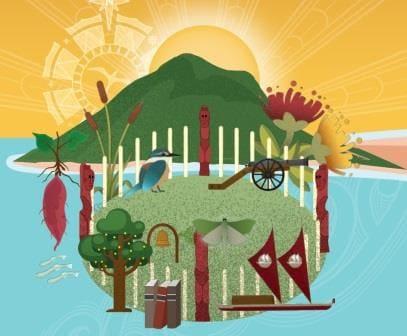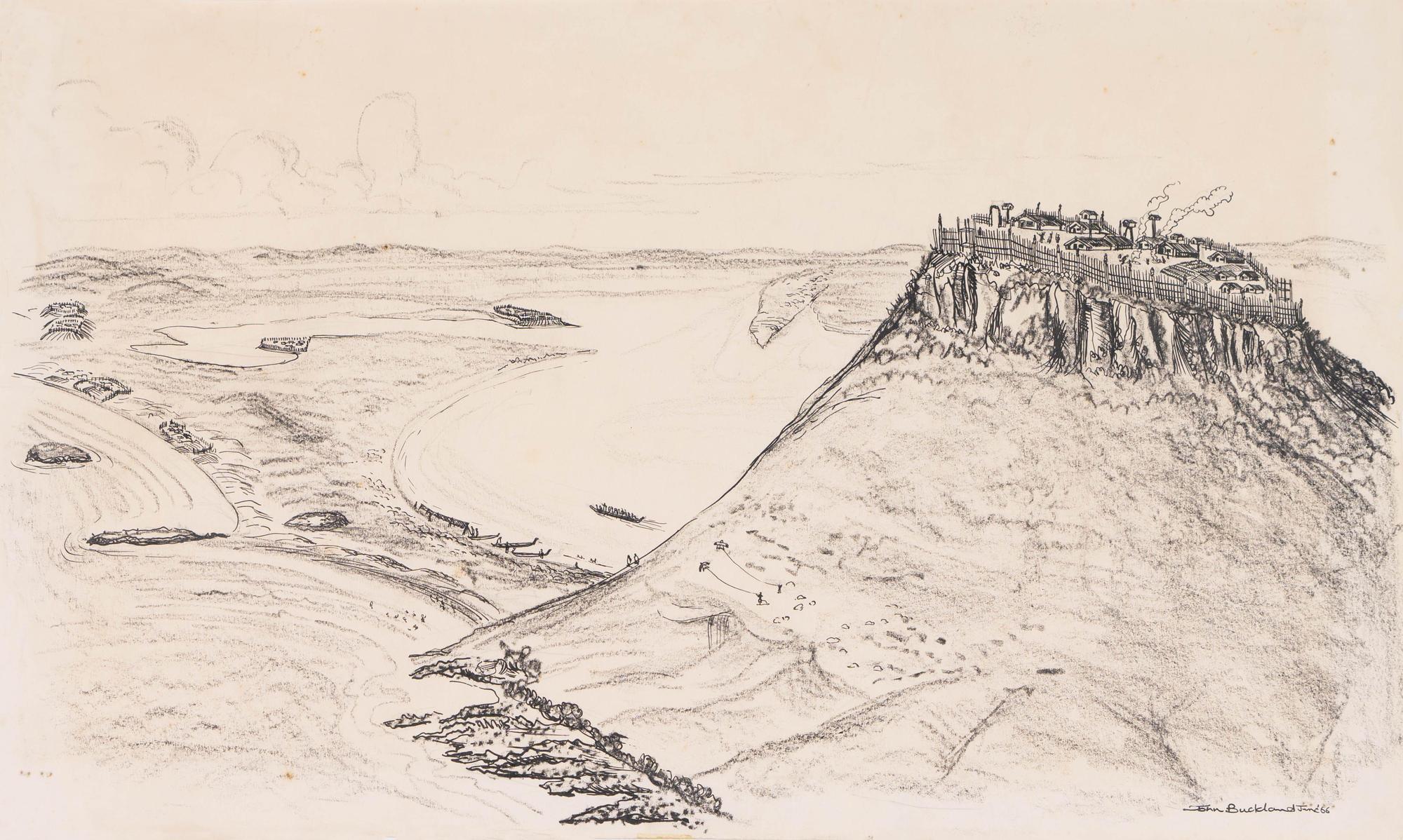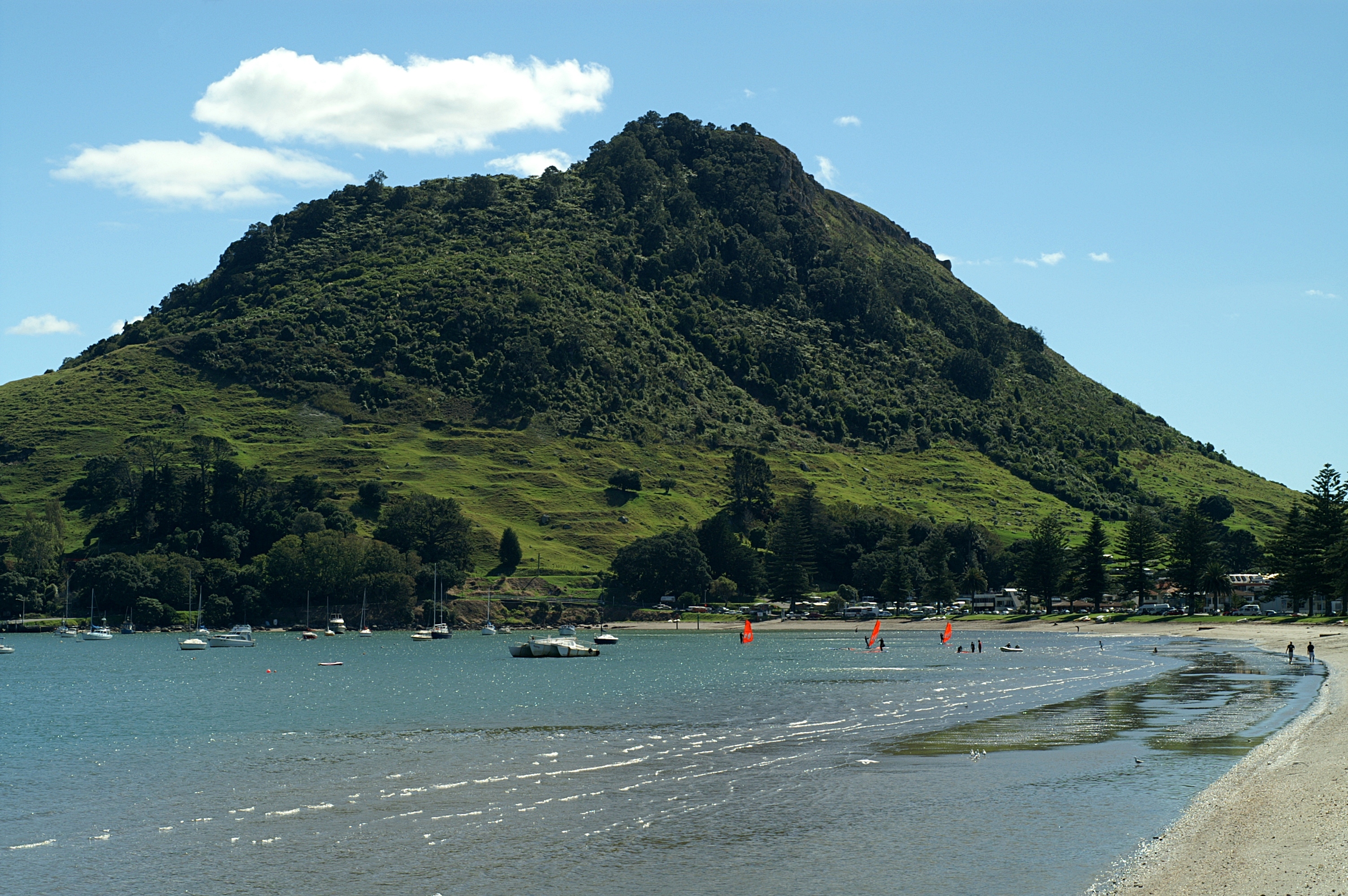The Legend of Mauao, our taonga tīpuna (treasured ancestor), is the story of how Mauao was named.

There was once a hill with no name among the many hills and ravines on the edge of the forests of Hautere. This nameless one was pononga, slave or servant, to the great chief Ōtānewainuku the forested peak which stands as a landmark for the tribes of Tauranga Moana.
To the south-west was the shapely form of the hill Puwhenua, a woman clothed in all the fine greens of the ferns and shrubs and trees of the forest of Tāne. The nameless one was desperately in love with Puwhenua. Her heart was already won by the majestic form of the chiefly mountain Ōtānewainuku.
There seemed no hope for the lowly slave with no name to persuade her to become his bride. The nameless one sorrowed. In despair he decided to end it all by drowning himself in the ocean, Te Moananui a Kiwa (Pacific Ocean). He called on the patupaiarehe, the people with magical powers who dwelled in the forests of Hautere. They were his friends and they plaited the ropes with their magic to haul him from the hill country toward the ocean. As they pulled on their ropes, they chanted their magic chant and hauled the nameless one from his place among the hills from Waoku. They gouged out the valley where the river Waimapu now flows. They followed the channel of Tauranga Moana past Hairini, past Maungatapu and Matapihi, past Te Papa. They pulled him to the edge of the great ocean of Kiwa. But it was already close to daybreak. The sun rose. The first rays lit up the summit of the nameless hill and fixed him in that place.
The patupaiarehe melted away before the light of the sun. They were people of the night and they flew back to the shady depths of the forests and ravines of Hautere. The patupaiarehe gave a name to this mountain which marks the entrance to Tauranga Moana. He was called Mauao which means caught by the dawn, or lit up by the first rays of sunrise. In time, he assumed greater mana than his rival Ōtānewainuku. Later he was also given another name, Maunganui, by which is now more often known. He is still the symbol of the tribes of Tauranga Moana.
Source: Stories of Tauranga Moana (1980) by Evelyn Stokes.

A poem by Debbie McCauley (2010)
Oh, Pūwhenua, Pūwhenua
festooned by Tāne Mahuta,
why did you give your heart
to the powerful Ōtānewainuku?
Oh, Pūwhenua, Pūwhenua
why could you not love
the slave who watched you
with abject fascination?
Our Mauao gazed blissfully
upon you with such adoration.
You were the object of his
infinite love and affection.
He worshiped you, and, crushed,
planned to drown his sorrow
away, all the time weeping for
what might have been.
We give him our love now
trying to ease his heartsickness.
Even Tangaroa endeavours comfort,
rocking him within indigo arms.
